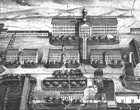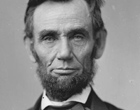Slavery spread across the South, but not evenly and not with uniform consequences. In the 1850s, enslaved labor expanded into the mountains of southwest Virginia, western North Carolina, and eastern Tennessee, where it had not flourished before. The slave states of the upper South - from Maryland, through Virginia, North Carolina, Tennessee, Kentucky, and Missouri - saw themselves as buffers between a fanatical upper North and a fanatical lower South. The dominant crops along the border were wheat, corn, and livestock; they were slave states, not cotton states. The areas within those states with fewer slaves resented the domination of state government by the slaveholding interests.
The North experienced similar geographic divisions. New England, upstate New York, and the upper Great Lakes region increasingly defined themselves against the South, its economy, its values, and its politics. Much of the abolitionist crusade grew in those areas. New York City, New Jersey, Pennsylvania, and the lower Midwest, by contrast, prided themselves on their moderation. They often traded with southern neighbors, shared their prejudices against black Americans, and tended to vote for the Democrats. These areas, like those of the upper South, thought they could help steer the nation through any sectional crisis.
This complex mosaic of region, interest, ideology, culture, and party, ironically, helped unify the nation. The more variegated the regions, the less likely that northern interests and southern interests would lead to the division of the country that people had feared since the time of the Constitution and the 1820 Missouri Compromise. As northern manufacturing grew stronger, the more it depended on the cotton produced by slaves; as southern plantations grew more specialized, the more they relied on northern manufacturers and importers. Voters in the cities in the North often proved sympathetic to the South and to slavery; cities in the South often supported talk of secession more than large planters did.




